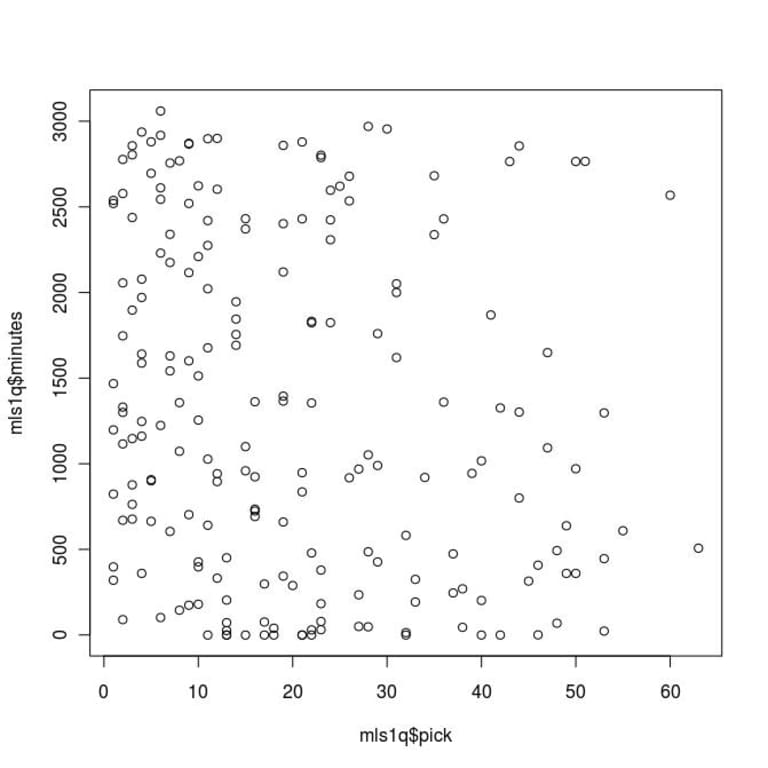Major League Soccer has been and always will be a North American sports league, and with that geographic reality comes some ingrained attributes — one of which is the very non-European concept of the draft. No matter if they're in a rebuilding or a reloading phase, every North American sports franchise — yes, even the Yankees — is required to draft carefully in order to remain relevant. MLS and the implications of the SuperDraft is no exception.
However, in a league that boasts only three Most Valuable Players in its history that entered the league via the draft (Jason Kreis, Taylor Twellman, Chris Wondolowski), the effectiveness of the draft as a championship-building mechanism is often unclear.
But the MLS SuperDraft isn't about finding rare gems like those players: it's about understanding the nuances of the MLS player market and generating negotiation leverage for the front office.
The major problem in understanding the draft is that there are no clear metrics to evaluate the quality of a pick. Intuitively, one would expect that the first pick in the draft would be the best available player and the second pick would select the next best, so on and so forth. But, fans know better than this, and have since before the days of Steve Shak. Each team has different needs and different understandings of how well a particular prospect would fit into their system.
And, even after selecting a player, it remains unclear what a reasonable rookie season expectation is. Sometimes early draft picks have very mediocre seasons and leave you scratching your head wondering if his performance was worth a single-digit draft pick, and then follow that up with a breakout season. Other times you have a guy like Jeff Parke, who was the last pick of the 2004 SuperDraft, walking straight into the starting lineup.
While crude, a decent proxy for performance is minutes. I say this because the leading predictor of the number of minutes played during a player's sophomore season is not not their overall draft number, but the number of minutes played during their rookie season.
For example, combining the number of years since a player was drafted and the selection number in that draft in a regression only accounts for eight percent of a the variance seen in a player's playing time.
The trends here are very weak — if they even exist at all:

While this suggests (but certainly doesn't prove) a general inefficiency of the order in which players are being selected, there is a clear value in the overall set of players that are being drafted.
Here is the 2012 MLS ranked by the percentage of total minutes played by players that entered the league via an MLS draft (in any year), along with their regular-season point total:
Team |
Percentage |
Points |
Sporting Kansas City |
0.6401 |
63 |
Chicago Fire |
0.5850 |
57 |
Colorado Rapids |
0.5467 |
37 |
Houston Dynamo |
0.5104 |
53 |
LA Galaxy |
0.4947 |
54 |
Montreal Impact |
0.4761 |
42 |
Philadelphia Union |
0.4549 |
36 |
Seattle Sounders |
0.4331 |
56 |
Toronto FC |
0.4282 |
23 |
FC Dallas |
0.4200 |
39 |
D.C. United |
0.4123 |
58 |
Columbus Crew |
0.3967 |
52 |
San Jose Earthquakes |
0.3898 |
66 |
New England Revolution |
0.3859 |
35 |
Portland Timbers |
0.3699 |
34 |
Chivas USA |
0.2810 |
30 |
Real Salt Lake |
0.2773 |
57 |
New York Red Bulls |
0.2268 |
57 |
Vancouver Whitecaps |
0.1165 |
43 |
If there were ever proof that international roster spots (or allocated national team players, etc.) don't buy league points, this table is that. With a team's percentage of minutes played by MLS-drafted players accounting for only three percent of league point variance, the league-wide benefits of the MLS draft is almost certainly undervalued.
Something to keep in mind next season, when the next Tommy Meyer — a draft-day afterthought — is starting in an MLS Cup.












